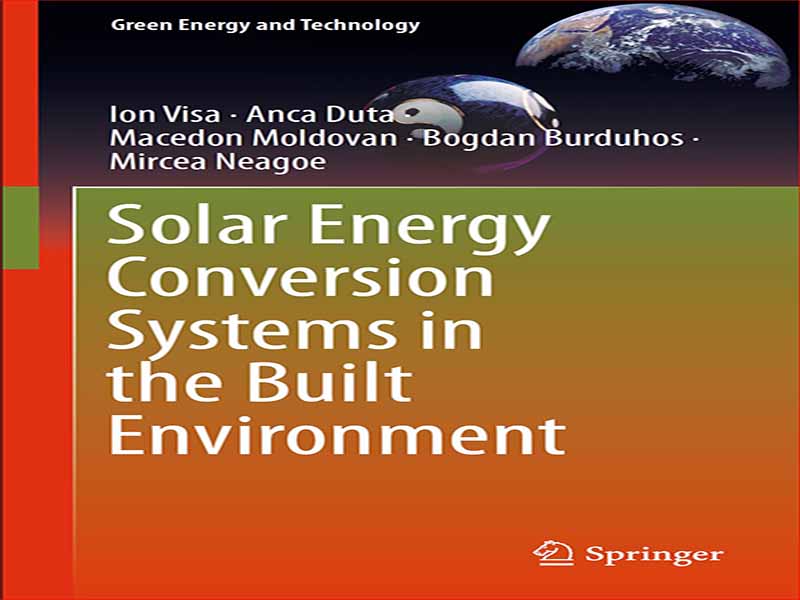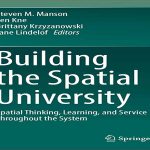- عنوان مجله: Solar Energy Conversion Systems In The Built Environment
- نویسنده: Ion Visa • Anca Duta
- حوزه: َانرژی خورشیدی
- سال انتشار: 2020
- تعداد صفحه: 391
- زبان اصلی: انگلیسی
- نوع فایل: pdf
- حجم فایل: 18.5 مگابایت
مفهوم توسعه پایدار از سال 1987 که برای اولین بار معرفی شد هرگز مورد بحث قرار نگرفت. با این حال، اقدامات لازم برای اجرای این مفهوم به سرعت شناسایی نشد و حتی با کندی بیشتری در استراتژیهای توسعه در سراسر جهان پیادهسازی شد. دلایل اصلی تکیه بر پیچیدگی و خاص بودن این اقدامات است که عمدتاً بر انرژی مورد نیاز برای تغذیه فرآیندهای تولید، محیط ساخته شده، کشاورزی و هر فعالیت دیگری در هر جامعه تمرکز دارد. این ویژگی به عوامل عینی بستگی دارد، به عنوان در دسترس بودن منابع طبیعی خاصی که می توانند برای تولید انرژی، عمدتاً منابع انرژی تجدیدپذیر، استفاده شوند، بلکه به ویژگی های محل اجرا و جامعه اجراکننده نیز بستگی دارد. به همین دلیل است که اخیراً اجرای توسعه پایدار عملاً مورد توجه قرار گرفته است، به عنوان مثال. با برنامه ریزی و توسعه ساختمان های انرژی پایدار یا جوامع پایدار. در این کاربردها، نقش انرژی خورشیدی بسیار مهم است، زیرا این یک منبع انرژی بدون هزینه است که به راحتی در هر مکانی روی زمین در دسترس است. با این حال، تنوع روزانه و فصلی انرژی خورشیدی، که لزوماً از ریتم زندگی انسان و تقاضای انرژی مرتبط با آن پیروی نمی کند، موانع قابل توجهی را در پیاده سازی و بهره برداری از یک محیط ساخته شده پایدار بر اساس سیستم های تبدیل انرژی خورشیدی ایجاد می کند. هر مکانی در جهان بنابراین، راهحلهایی باید برای حل مسائل خاصی که میتواند از توسعه یک محیط ساختهشده با سهم انرژی خورشیدی بالا حمایت کند، شناسایی شود و این راهحلها باید امکانپذیر، مقرونبهصرفه و مناسب برای جوامعی با سطوح مختلف توسعه و سطوح مختلف منابع مالی باشد. . با توجه به نیاز واقعی به راه حل های بهینه مبتنی بر سیستم های تبدیل انرژی خورشیدی پیاده سازی شده در محیط ساخته شده، نویسندگان این کتاب مواد پیچیده ای را با تمرکز بر سیستم های پرکاربرد (سیستم های فتوولتائیک و خورشیدی- حرارتی) و مشکلات خاص ارائه کردند. هنگام اجرای این موارد در مکان های مختلف مواجه می شوند. در ادامه، مطالعات موردی مورد تجزیه و تحلیل قرار میگیرند، زیرا میتوان آنها را بیشتر بهبود بخشید و تکرار کرد تا نتیجه مثبتی در تلاش برای پایداری حاصل شود.
The concept of sustainable development was never contested since 1987 when it was firstly introduced. However, the measures required to implement this concept were not quickly identified and were even more slowly implemented in the development strategies, all over the world. The main reasons are relying in the complexity and specificity of these measures that are mainly focusing on the energy required to feed the production processes, the built environment, the agriculture and in any other activities in any society. This specificity depends on objective factors, as the availability of certain natural resources that can be used to produce energy, mainly renewable energy sources, but also on the features of the implementation location and of the implementing society. This is why only recently the sustainable development implementation was practically approached, as e.g. by planning and developing sustainable energy buildings or sustainable communities. In these applications, the role of solar energy is highly important, as this is a cost-free energy source that is readily available in any location on the Earth. However, the daily and seasonal variability of the solar energy, that does not necessarily follow the rhythm of the humans’ life and the associated energy demand, raises significant barriers in implementing and operating a sustainable built environment based only on solar energy conversion systems, in any location in the world. Thus, solutions have to be identified to solve specific issues that can support the development of a built environment with a high solar energy share and these solutions have to be feasible, affordable and well suited to communities with different development levels and different levels of financial resources. Considering the real need for optimized solutions based on solar energy conversion systems implemented in the built environment, the authors of this book developed a complex material, focusing on the mostly used systems (photovoltaic and solar-thermal systems) and on the specific problems that are faced when implementing these in various locations. Further on, case studies are analysed as these can be further improved and replicated to get a positive result in the quest for sustainability.
این کتاب را میتوانید از لینک زیر بصورت رایگان دانلود کنید:
Download: Solar Energy Conversion Systems In The Built Environment

































نظرات کاربران